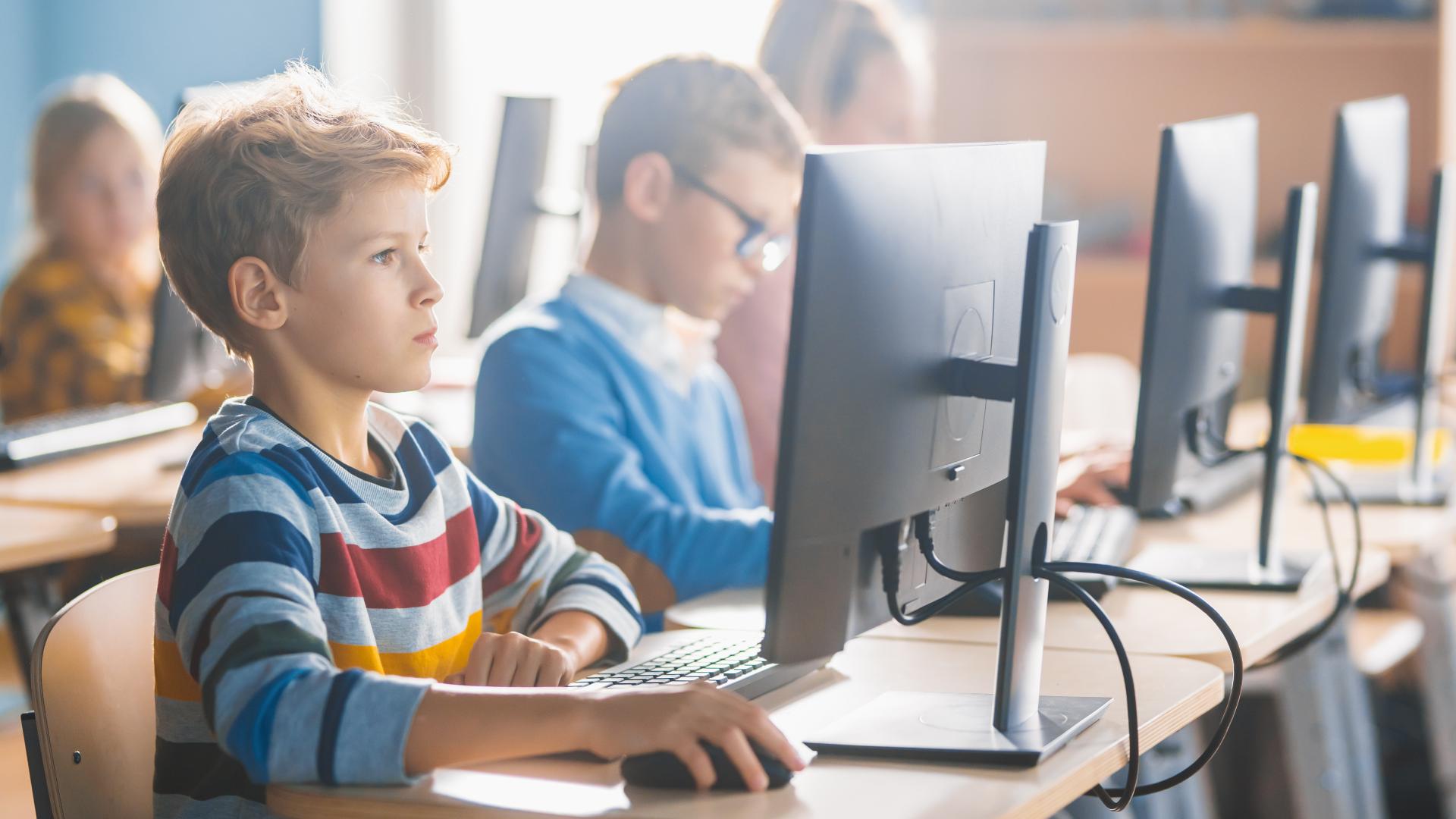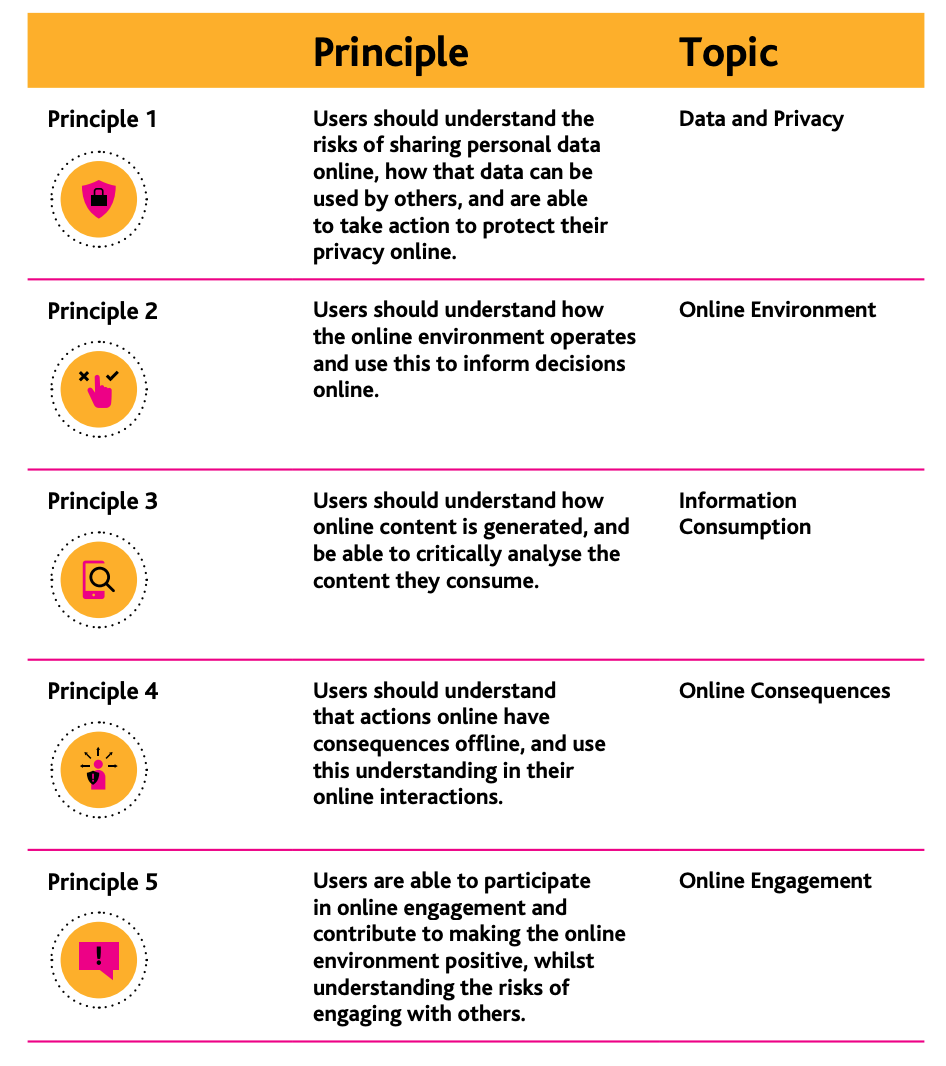Online media literacy: what is it and why should we teach it?
With more aspects of our lives being online, a good understanding of Online Media Literacy is important for us all – but especially for children and young people.
We often hear of teachers having to deal with the fall-out of things that happen online between friends – usually out of school hours – that impact pupils’ learning and behaviour.
Teaching Online Media Literacy equips pupils with the skills and behaviours to be able to successfully avoid or navigate these moments – and to be better prepared to spot and avoid other online risks.
What does ‘Online Media Literacy’ actually mean?
The Department for Digital, Culture, Media and Sport (DCMS) Online Media Literacy Strategy defines it as “a broad range of topics and issues relating to the online environment”.
We can further define it as the processes we can use to understand and analyse online spaces, and how we use this understanding to guide our actions and behaviours. Specifically, it relates to understanding:
-
how our data is used
-
how we protect our privacy
-
different types of online risks
-
information sources and how content is generated online
-
consequences of our actions online
-
how to be positive digital citizens.
Is teaching Online Media Literacy statutory?
In short, no.
However, while not mentioned specifically, there are references in the Computing National Curriculum for England (2013) which certainly imply it.
For example, it states that from key stages 1 to 4, it states that pupils should be taught to “use technology safely and respectfully”.
By the end of key stage 2, pupils will, “recognise acceptable/unacceptable behaviour”.
And by the end of key stage 3, pupils will, “understand a range of ways to use technology safely, respectfully, responsibly and securely, including protecting their online identity and privacy; recognise inappropriate content, contact and conduct”.
Also, the Relationships Education section (2021) of the statutory primary Relationships and Sex Education (RSE) and Health Education guidance states that, “when teaching relationships content, teachers should address online safety and appropriate behaviour in a way that is relevant to pupils’ lives.” There is also a list of bullet points on what pupils should know about online relationships – another part of Online Media Literacy.
So Online Media Literacy is in these documents in essence. It's just not explicitly defined. In time, it is possible – and arguably essential – that a clearer strategy towards improving Online Media Literacy be woven into the curriculum for primary and secondary education. It would give children and young people a better grounding in the skills and understanding of their ever-evolving digital lives.
What does the Online Media Literacy Strategy aim to achieve?
Launched in July 2021, the government's Online Media Literacy Strategy aims to “support organisations to undertake media literacy activity in a more coordinated, wide-reaching, and high quality way over the next three years”. This includes supporting and funding free education resources for schools (more below).
The strategy is divided into five main principles which the DCMS have identified as crucial for users to manage their safety online and make the most of what the internet has to offer:
Each principle is further divided into three sections: User Skills, Business Expectations and User Knowledge. These explain what skills and knowledge the user needs to have and what the business expectations are to put in place.
The strategy is a great resource for learning more about Online Media Literacy more generally. However, it doesn’t provide a sequence of teaching points or lessons for use in the classroom. That’s where other resources can help.
What free Online Media Literacy resources are available?
To improve Online Media Literacy in your setting and better equip pupils and students to critically evaluate information they see in online media, you could start with the following programmes and resources:
Be Internet Legends is a free education programme from Google for primary pupils aged 7-11. It teaches the skills and behaviours to thrive in an online world with curriculum activities focusing specifically on Online Media Literacy.
These include spotting online risks, scams and disinformation, understanding how different media communicate and how our own messages can carry many interpretations. Download a free curriculum pack here.
Pupils and parents can also learn more together through interactive virtual assemblies. Register for an assembly here.
This project was developed by Parent Zone and funded by DCMS to increase Media Literacy resources and specific support for teachers working with SEND pupils. It includes resources for a wide breadth of ages, from 5-16 years.
PZ SEND brings a variety of Parent Zone’s educational resources together with honest reviews, practical ideas and guidance from within the SEND community. Visit the PZ SEND site here.
Resources have been adapted to meet specific SEND needs, but are also adaptable for teachers to make them right for their learners.
A curriculum designed to help children, aged 5-16, to develop the knowledge and skills they need to navigate the online world in a safer and more enjoyable way.
Digiworld features lesson plans and activities for schools – and for families. This is supported by an online game with quizzes and challenges to test a child or young person’s knowledge of the online world and different behavioural responses – supported by a library of information and advice. Visit Digiworld here.


